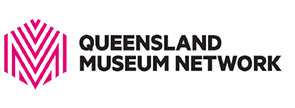Blog Archives
Dealing with flood and mould damaged collections
Our thoughts and best wishes are with the people of Townsville and Western Queensland who are currently experiencing unprecedented rain and flooding.
The Museum Development Officer program is currently in the process of contacting heritage organisations in the flood affected areas to see how they have fared and if they require assistance. If your organisation needs help please contact Dr. Jo Wills on 0478 307 447 or joanna.wills@qm.qld.gov.au
We have also compiled a list of resources (see below) to help organisations deal with water and mould affected collections.
These resources will also be useful to anyone who is dealing with their own personal collections, so please share the information across your community.
If your collection has been damaged, please don’t risk your own safety for collection items. Stay safe and ensure everyone is wearing suitable safety equipment (see list of PPE below). Only enter flood-affected buildings when you have been given the all clear from the authorities.
Once you have entered the affected area, it is important to allow time to take stock and get over the initial shock and panic. Many people’s gut reaction is to throw everything in the skip. While sadly many objects may be beyond repair, it is very rare for everything to be unsalvageable. The sooner you are able to access objects, the better the chance of successful salvage.
Objects such as ceramics and glass may be covered in mud but otherwise undamaged. Many water and mould damaged paper and photographic material can be frozen indefinitely (see list below for the link to State Library’s instructions on safe freezing). Freezing allows you valuable time to recover from the immediate flood recovery phase. You can then treat frozen material when everything has calmed down and you have more resources, energy, and people available. Please see the links below from the AICCM and State Library for specific salvage guidelines.
And last but not least, ensure everyone involved in the many hours of recovery that lie ahead are well fed and take regular rest breaks. The volunteers who make the cakes and sandwiches are as vital to the recovery as those working directly with the objects.
Personal Protective Equipment:
- protective footwear (ideally safety boots or safety gumboots);
- disposable P2 respirator masks, the kind with the valve on the front is best and replace regularly as it gets dirty (N.B. For heavily mould affected collections, a full face mask with P2 or P3 filters would provide better protection)
- sturdy waterproof gloves for retrieving objects from the water and mud;
- nitrile gloves during salvage treatment work;
- safety glasses to protect your eyes from toxic particulate matter including mould (the type with wrap around sides provides the best protection);
- Tyvek overalls are recommended if mould is present or you are working in very muddy, contaminated conditions;
- Most hardware stores will stock the PPE listed above.
- N.B. For very serious mould outbreaks, it is recommended you seek advice from a mycologist prior to accessing the collections. People with respiratory conditions should not be involved in any mould clean up.
Online resources:
- Australian Institute for the Conservation of Cultural Materials (AICCM)
- Flood resources link: https://www.aiccm.org.au/disaster/flood
- List of websites with practical information on dealing with flood damaged collections
- Brochure: After a Flood https://aiccm.org.au/sites/default/files/docs/AICCM_Brochures/AfterAFlood_Ver5.PDF
- Flood resources link: https://www.aiccm.org.au/disaster/flood
- State Library of Queensland
-
- Dealing with disaster – Part one: how to recover a flood-damaged collection: https://www.youtube.com/watch?v=AfFke8fIOfw
- Salvaging damaged collections:
- Savaging flood damaged collections: http://www.slq.qld.gov.au/resources/preserving-collections/salvage_damaged_collections
- Freezing water damaged collections: http://www.slq.qld.gov.au/__data/assets/pdf_file/0004/128983/Caring-for-your-collections-Freezing-water-damaged-and-insect-infested-collections.pdf
- Dealing with mould: http://www.slq.qld.gov.au/__data/assets/pdf_file/0003/128982/Caring-for-your-collections-Dealing-with-mould.pdf
-
- Queensland Culture and Heritage Disaster Forum (Q-Dis)
- This Facebook page provides a disaster forum for Queensland heritage and cultural organisations: https://www.facebook.com/QDisForum
- Museums and Galleries Queensland
- M&G QLD have set up a disaster recovery fund: http://www.magsq.com.au/cms/page.asp?ID=5084
If you have trouble accessing any of the links above, please let us know and we will get the information to you in another format.
